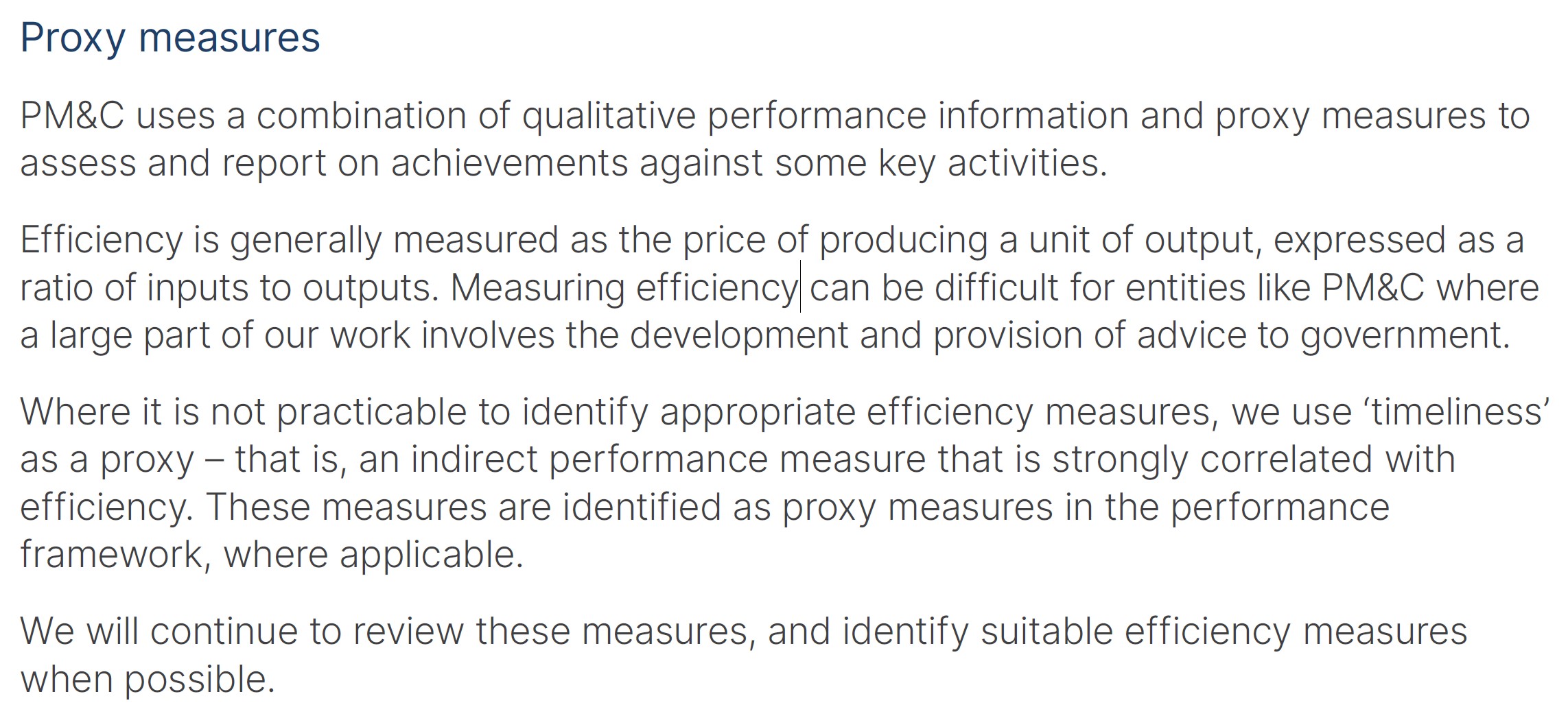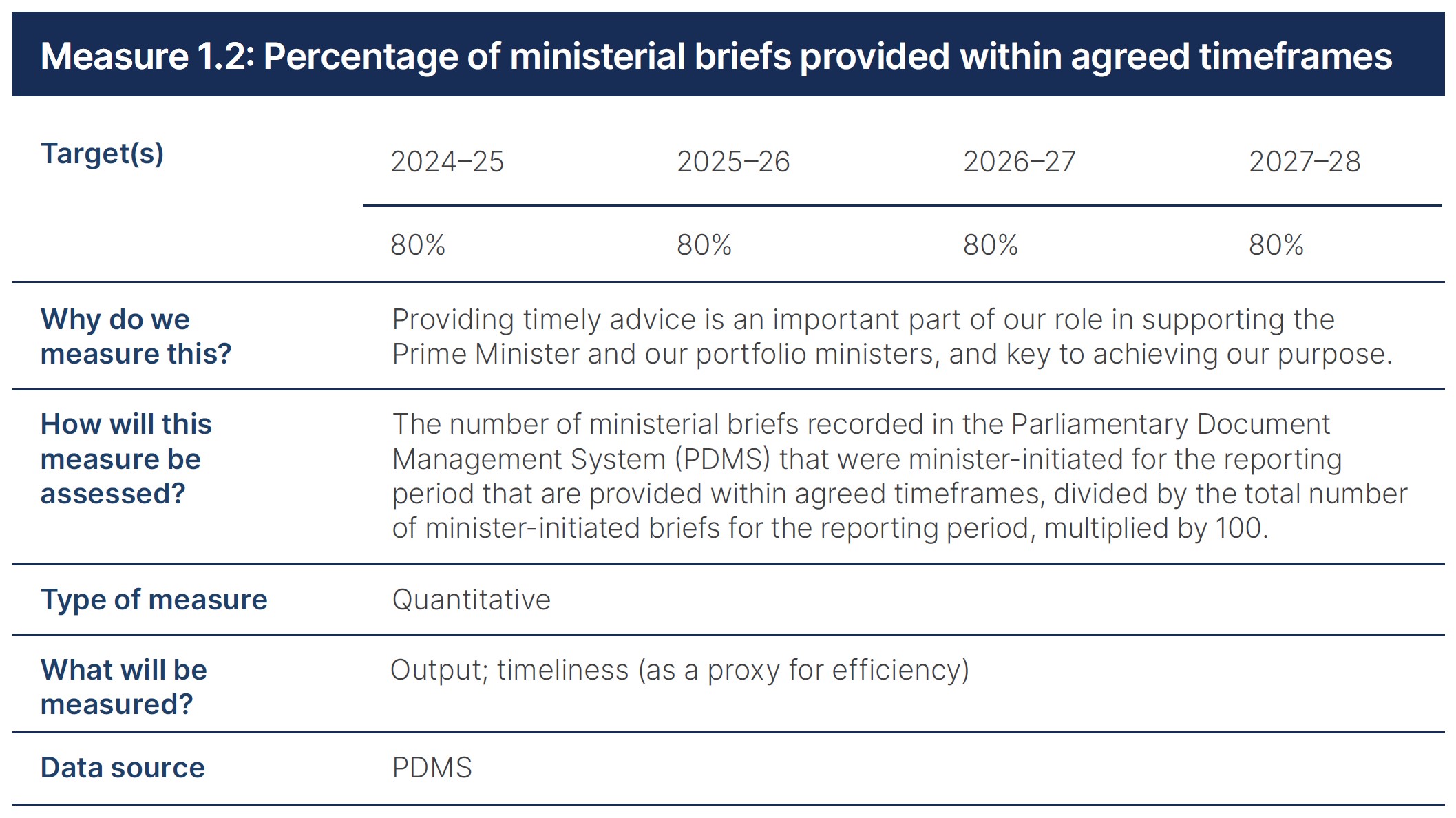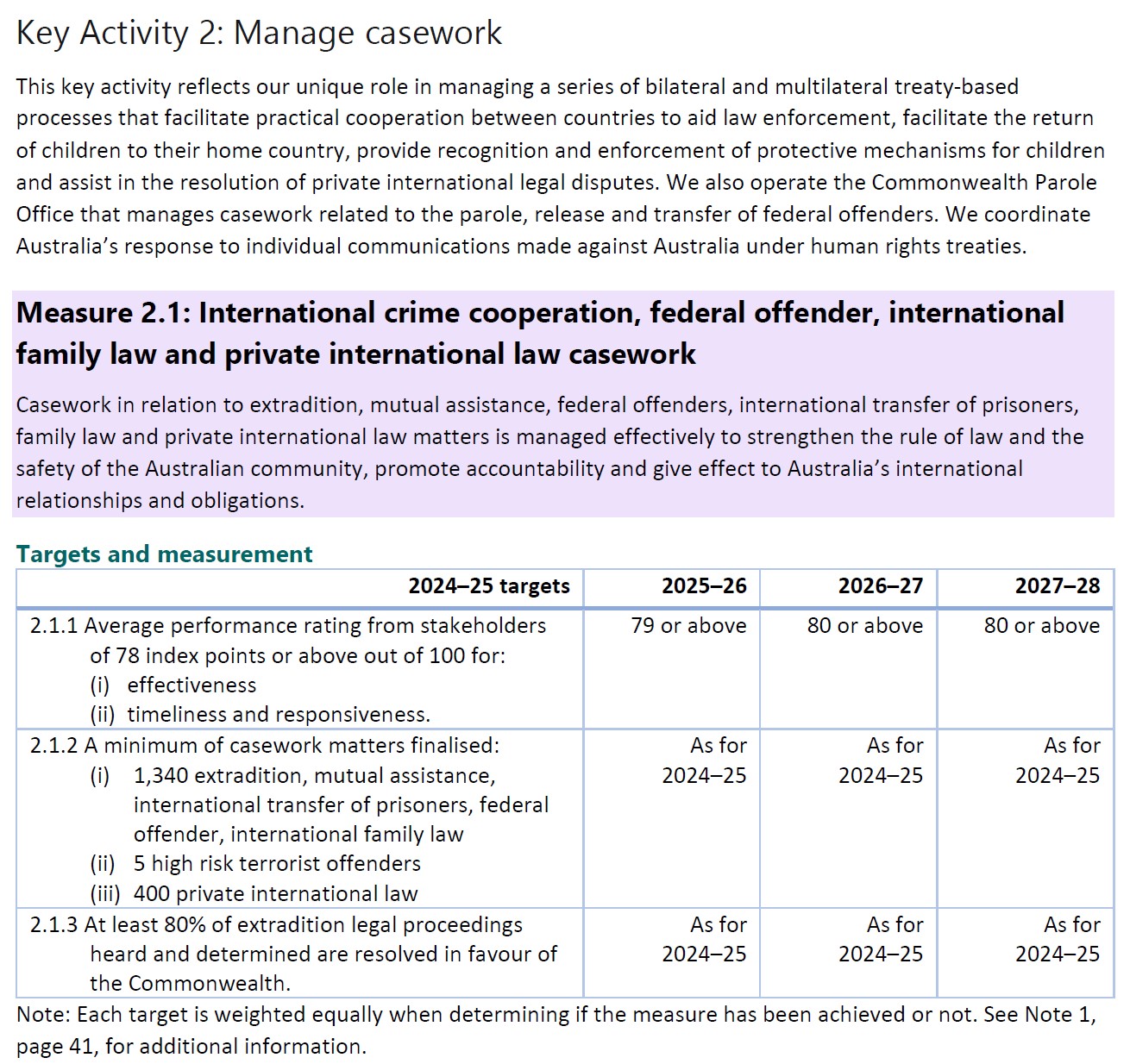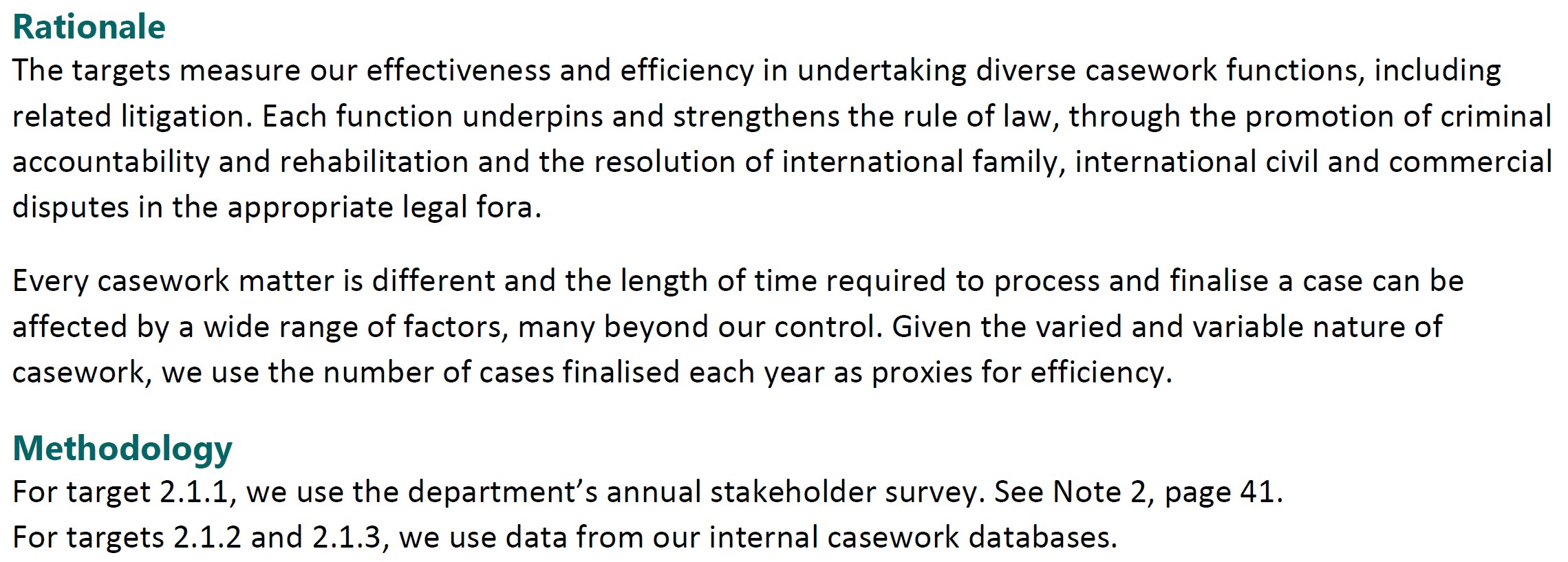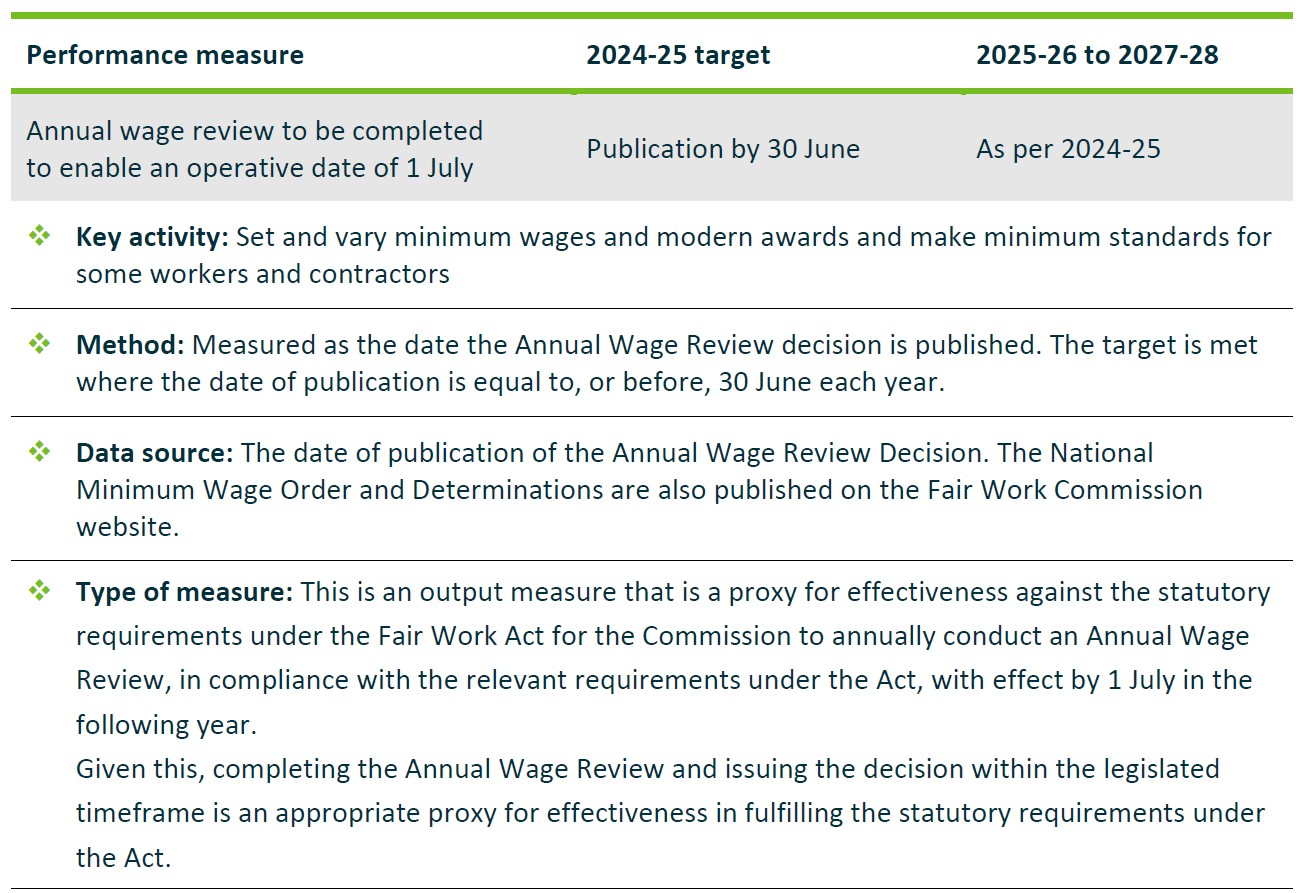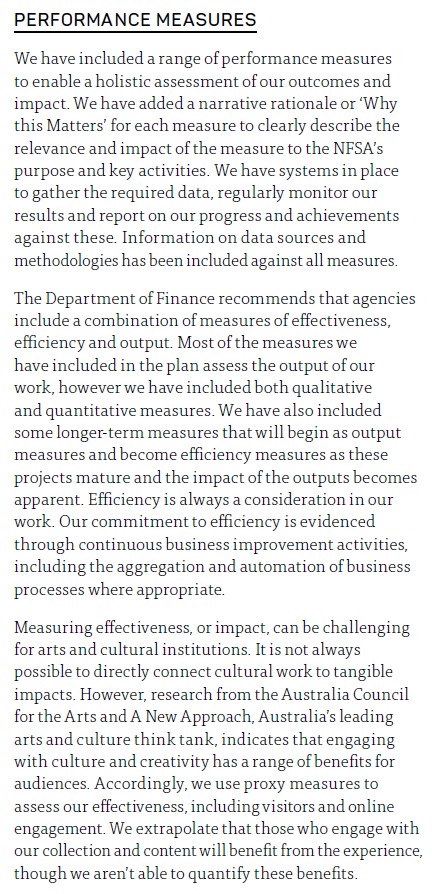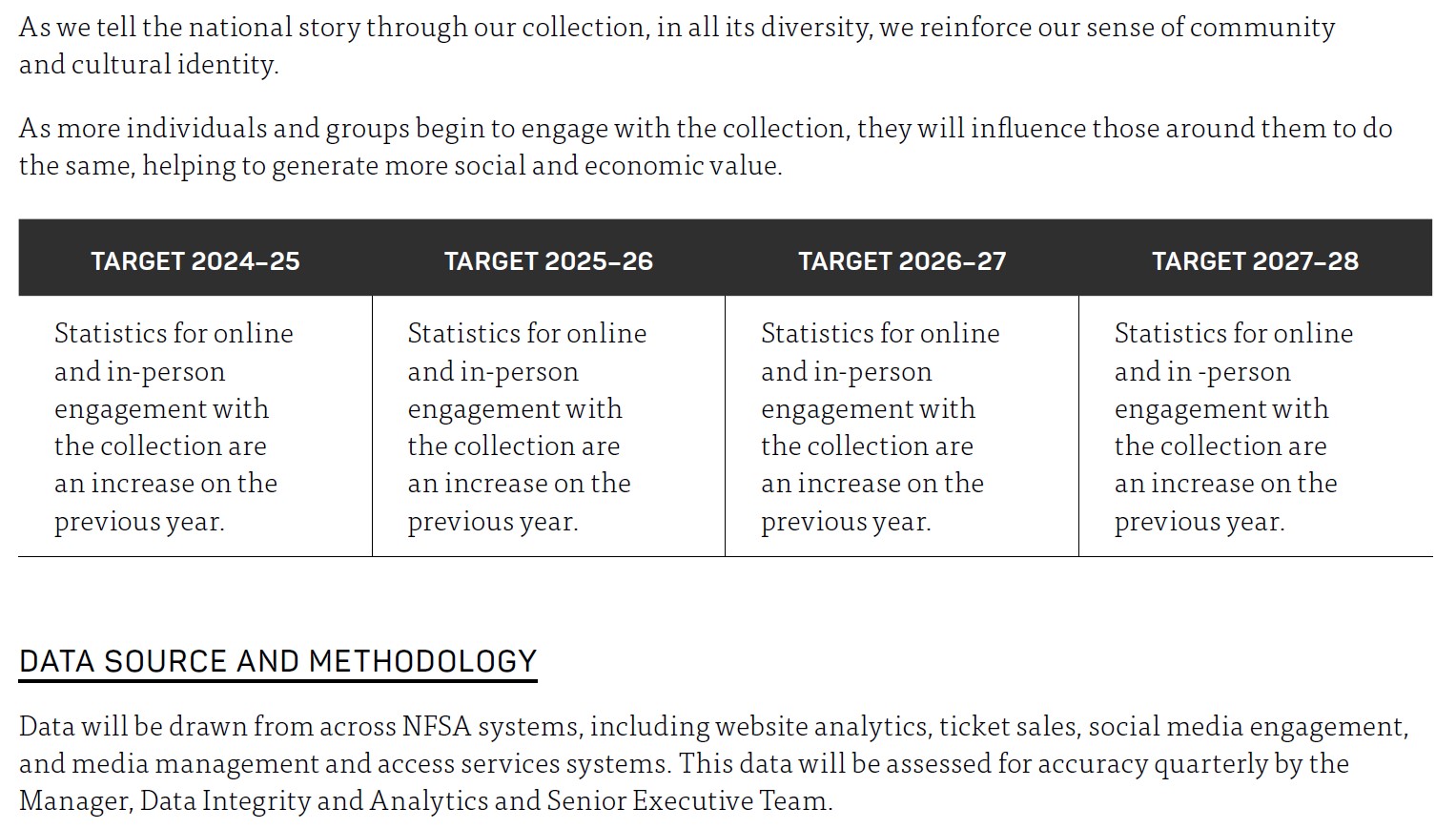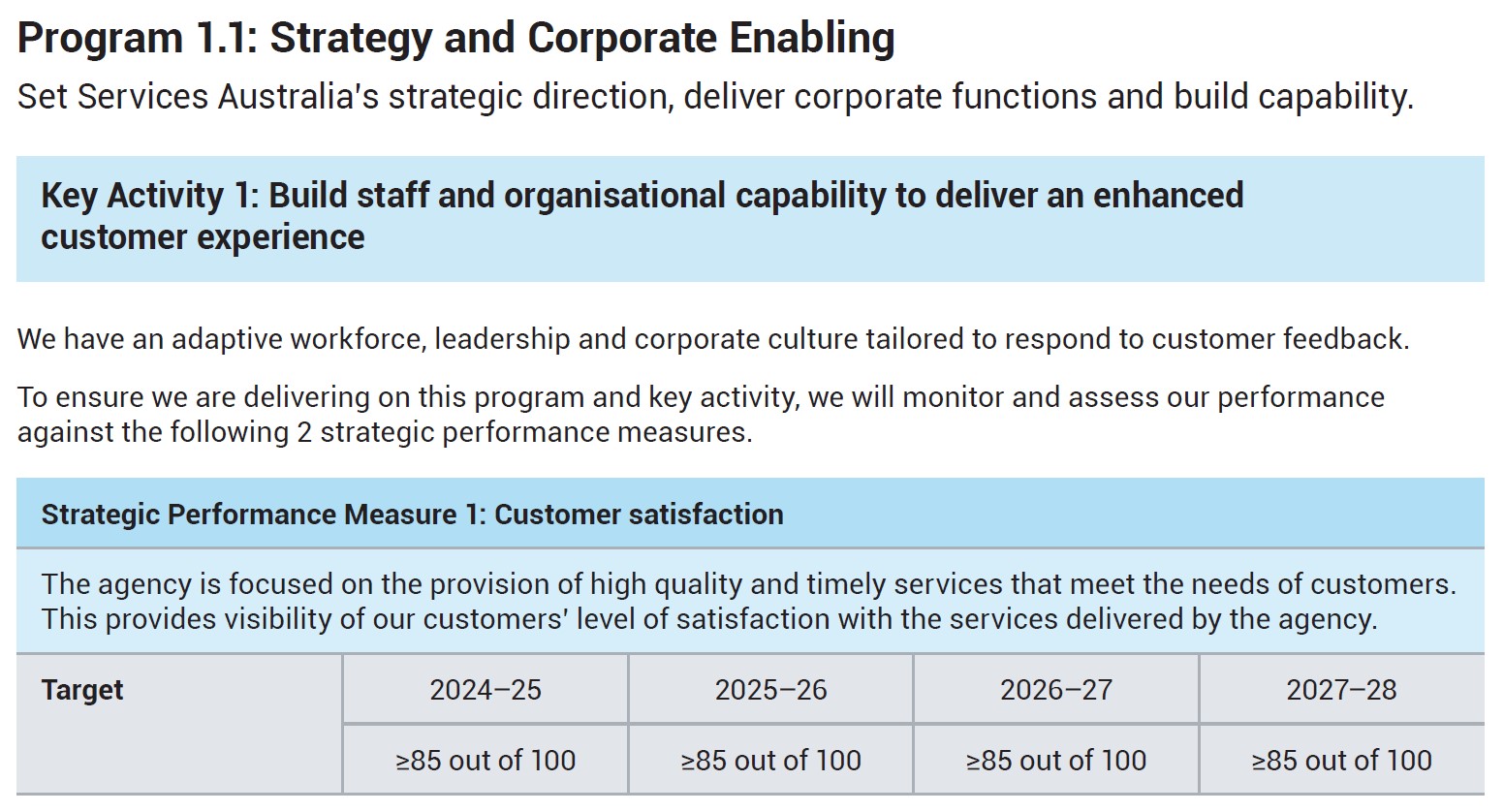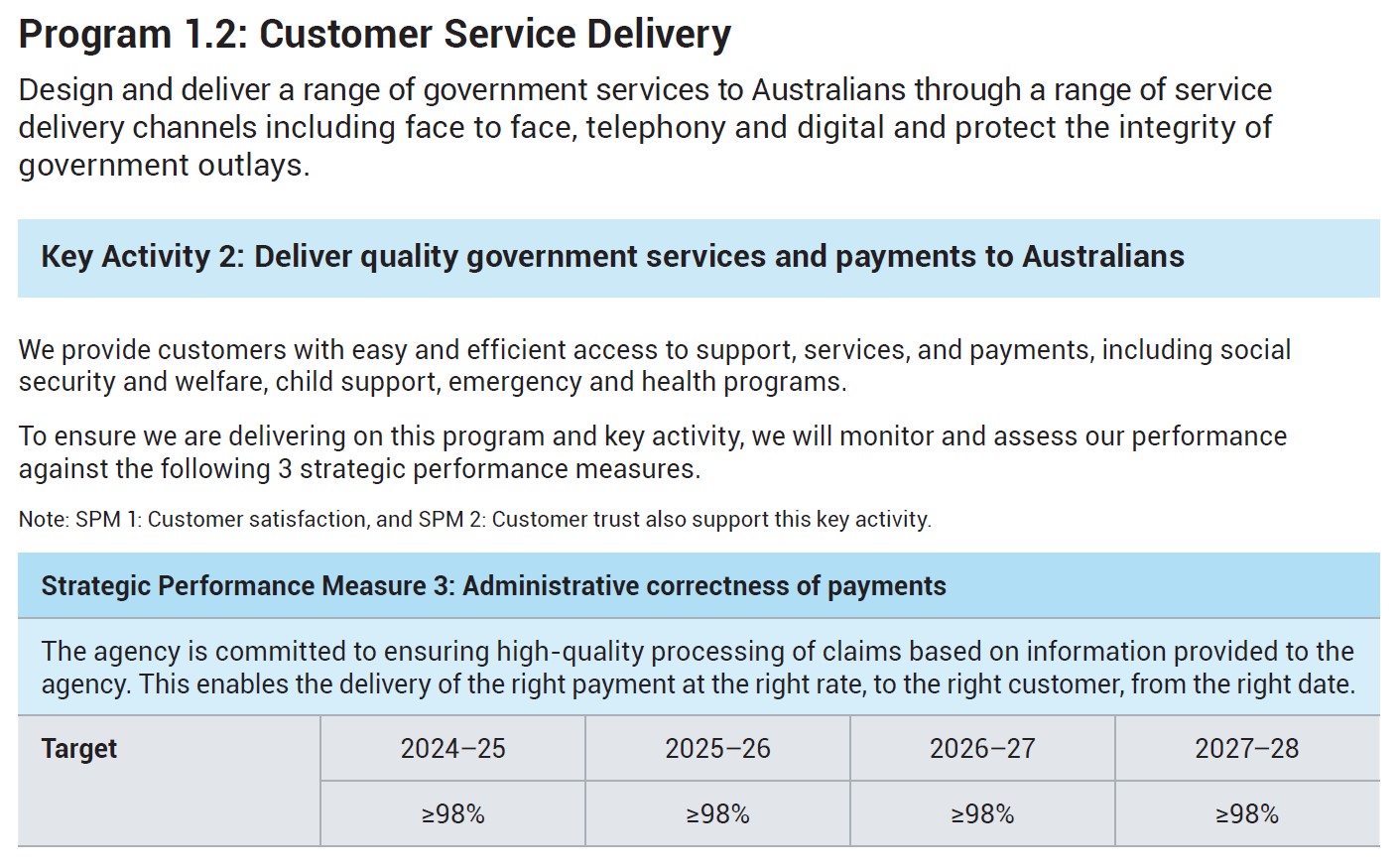Public Governance, Performance and Accountability Rule 2014 section 16EA(e)
The performance measures meet this requirement when they include measures of the entity's outputs, efficiency and effectiveness if those things are appropriate measures of the entity's performance.
Performance measures are required for each reporting period covered by the plan (that is, a minimum of 4-years). Entities often demonstrate this coverage through specified targets, where reasonably practicable to set a target, for each of the reporting periods covered by the plan.
An entity’s performance measures must include measures of the entity’s outputs, efficiency and effectiveness, if these are appropriate measures of the entity’s performance in the context of its purposes or key activities.
Historically, output measures have been the dominant means by which entities have measured their performance. However, there is a reasonable expectation that performance measurement would include measures of effectiveness and efficiency of the key activities undertaken to achieve an entity's purposes, where appropriate.
For an entity with key activities involving the development and provision of policy advice to government, the development of output measures may be sufficient as effectiveness and efficiency measures may not be appropriate, for example, when the cost and reliability of data collection and the needs of stakeholders are taken into account.
Proxy measures
In some cases, it may be appropriate to use a proxy measure.
A proxy measure is an indirect measure of the activity which is strongly correlated with the activity to measure effectiveness and/or efficiency of the activity.
For example, this may occur when data is not available or cannot be collected at regular intervals, or when the cost of gathering and analysing information is prohibitive or outweighs the potential benefits of collecting and reporting on it.
Where the impact of activities is difficult to assess, output measures may be an appropriate assessment proxy for whether services have reached their intention, at the right time and cost.
If proxy measures are used, it is good practice for entities to include in their corporate plan an explanation of why they are being used and demonstrate why the proxy measure is suitable.
Better practice principles:
- In some cases, it may be appropriate to use a proxy measure
- If proxy measures are used, entities should outline in their corporate plan why they are being used and demonstrate why the proxy measure is suitable.
Proxy for efficiency measures examples
2024-25 Department of the Prime Minister and Cabinet Corporate Plan (pages 25 and 33)
The Department of the Prime Minister and Cabinet uses mapping techniques within its a plan on a page to illustrate how each performance measure maps directly to each of its 3 key activities. The plan on a page also features its purpose, outcome statement and program.
Source: Department of the Prime Minister and Cabinet, Corporate Plan 2024–25, © Commonwealth of Australia
2024–25 Attorney-General’s Department Corporate Plan (pages 29-30)
Proxy for effectiveness measures examples
2024–25 National Film and Sound Archive Corporate Plan (pages 18 and 32-33)
The National Film and Sound Archive’s plan explains its reason for using proxy measures to measure its effectiveness as follows:
‘Measuring effectiveness, or impact, can be challenging for arts and cultural institutions. It is not always possible to directly connect cultural work to tangible impacts. However, research from the Australia Council for the Arts and A New Approach indicates that engaging with culture and creativity has a range of benefits for audiences. Accordingly, we use proxy measures to assess our effectiveness, including visitors and online engagement. We extrapolate that those who engage with our collection and content will benefit from the experience, though we aren’t able to quantify these benefits.’
Source: 2024-25 National Film and Sound Archive Corporate Plan (page 18).
What is an output measure?
Output measures assess the quantity and quality of the goods and services produced by an activity (including their volume or quantity).
Some common types of output measures are:
- Product of inputs and activity - measures the outputs resulting from inputs and activity. For example, this may be the number of services provided, the number of service recipients, or the number of goods produced.
- Access - measures how easily the intended recipients can obtain a good or service. There are several dimensions to access, such as timeliness of access (for example, measured in waiting times, processing times, time taken to produce an output), affordability of access (for example, the out-of-pocket cost of medical services), and service availability (for example, 24/7 availability of online services).
- Quality - measures how fit-for-purpose a good or service is. For example, this may be the extent to which outputs conform to certain standards (such as legislative or service standards). There are several dimensions to quality, such as accuracy (for example, accuracy of payments, decisions, etc.), safety of the good or service, and responsiveness to customer needs (for example, levels of customer satisfaction).
Example
2024-25 Services Australia Corporate Plan (pages 19-23)
Source: © Commonwealth of Australia (Services Australia) 2024
What is an efficiency measure?
Efficiency is generally measured as the price of producing a unit of output and is generally expressed as a ratio of inputs to outputs.
A process is efficient where the production cost is minimised for a certain quality of output, or outputs are maximised for a given volume of input. In a public sector context, efficiency is generally about obtaining the most benefit from available resources, that is, minimising inputs used to deliver the policy or other outputs in terms of quality, quantity, and timing.
Examples of efficiency measures may include:
- Cost per benefit payment;
- Cost per inspection/audit/project;
- Processing cost per grant.
Activities that are transactional in nature (such as the processing of welfare or grant payments, the operation of call centres or revenue collection functions) lend themselves to efficiency measurement.
Examples
2024–25 Department of Agriculture, Fisheries and Forestry Corporate Plan (page 26)
Source: DAFF 2024, Corporate Plan 2024–25, Department of Agriculture, Fisheries and Forestry, Canberra. CC BY 4.0.
2024–25 Comcare Corporate Plan (page 15)
What is an effectiveness measure?
Effectiveness is the degree to which something is successful in achieving a desired result.
That is, whether the activities of the entity have had the intended impact and policy objective in contributing to achieving the entity's purposes.
Examples of measures of effectiveness include:
- the change in literacy rates as a result of activities focused on raising the national reading standards in primary school children
- the change in the number of workplace injuries as a result of work health and safety regulation aimed at reducing workplace injuries.
Effectiveness can be measured in quantitative or qualitative terms. For many activities undertaken by the public sector, qualitative measures will complement quantitative measures. For example, people receiving education to improve literacy skills might be surveyed to understand the impact that an increase in literacy had on their quality of life.
Better practice principles:
- Effectiveness can be measured in quantitative or qualitative terms.
- Typically, qualitative measures will complement quantitative measures.
Examples
2024–25 Department of Employment and Workplace Relations Corporate Plan (page 36)
Source: Department of Employment and Workplace Relations 2024–25 Corporate Plan

